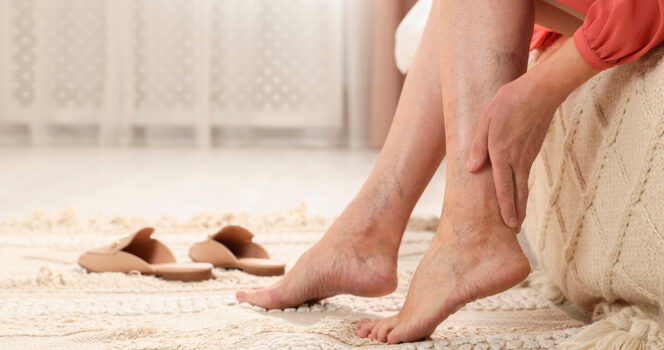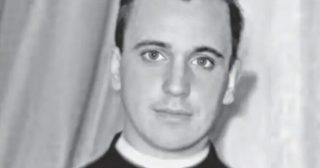7 Simple & Effective Exercises to Prevent Spider and Varicose Veins

7 Simple & Effective Exercises to Prevent Spider and Varicose Veins
Have you ever noticed thin, web-like veins or bulging, twisted veins on your legs? Maybe you’ve spotted them creeping up your own body? Spider veins and varicose veins affect millions of people worldwide, and while they may seem like a minor cosmetic issue, they can have a much bigger impact on your health and confidence.
Are Spider & Varicose Veins a Big Deal?
Both men and women can develop these veins, and while they might start as a cosmetic nuisance, untreated varicose veins can lead to more serious issues, such as pain, swelling, and even ulcers. Did you know that nearly 40% of adult women will experience varicose veins? But don’t worry — you don’t have to simply accept them as a part of aging!
By understanding the causes and implementing some simple exercises, you can keep your veins strong, healthy, and free from discomfort. Let’s dive into the details.
What Are Varicose Veins?
Varicose veins are swollen, engorged blood vessels that typically appear on your legs, feet, and ankles. These blue or purple veins often bulge just beneath the skin’s surface, causing discomfort, itching, and heaviness in the legs.
According to The Cleveland Clinic, if left untreated, varicose veins may lead to chronic venous insufficiency (CVI) — a condition where your veins struggle to send blood back to the heart. This can increase your risk of developing blood clots, making it important to take action early.
Key Signs of Varicose Veins:
Thick, bulging, rope-like veins
Often painful, itchy, or swollen
Leg fatigue and heaviness
Commonly found on the legs
What Are Spider Veins?
Spider veins, unlike varicose veins, are tiny, damaged blood vessels that appear just under the skin. They look like delicate red, blue, or purple lines and are often mistaken for varicose veins. However, they are harmless, although they can still affect your appearance and self-esteem.
Spider veins are usually caused by poor circulation, weak vein walls, or factors like genetics and prolonged sitting or standing. While they are typically painless, they can become more pronounced over time, especially on the legs and face.
Key Signs of Spider Veins:
-
Thin, thread-like veins
-
Usually painless
-
Commonly found on the legs and face
-
Caused by weakened blood vessels
What Causes Spider and Varicose Veins?
Several factors contribute to the development of these veins:
Genetics: A family history of varicose veins can increase your chances of developing them.
Prolonged Standing or Sitting: Jobs that require long hours of standing or sitting can lead to poor circulation.
Hormonal Changes: Pregnancy, menopause, and birth control pills can weaken vein walls.
Aging: Over time, veins lose elasticity, and blood circulation decreases.
Obesity: Extra weight puts additional pressure on veins, making blood flow less efficient.
Lack of Exercise: A sedentary lifestyle worsens circulation and blood flow.
Sun Exposure: Excessive sun exposure can damage veins, particularly on the face.
7 Exercises to Help Prevent Spider & Varicose Veins
One of the most natural and effective ways to prevent or alleviate spider and varicose veins is through exercise. Regular physical activity improves circulation, strengthens the veins, and reduces discomfort.
Here are 7 easy exercises you can incorporate into your daily routine to boost circulation and keep your veins healthy.
1. Leg Elevation
How to do it:
Lie on your back and elevate your legs against a wall or place a pillow under your legs. Hold the position for 10-15 minutes.
Why it helps:
This exercise helps encourage blood flow back to the heart and reduces swelling in your legs, preventing blood from pooling in the veins.
2. Calf Raises
How to do it:
Stand with your feet hip-width apart. Slowly raise your heels until you’re on your tiptoes, then lower back down. Repeat 15-20 times.
Why it helps:
Calf raises strengthen your calf muscles, which help pump blood more efficiently through your veins.
3. Ankle Rotations
How to do it:
Sit in a chair and lift one foot off the ground. Rotate your ankle in small circles (10 clockwise, 10 counterclockwise), then switch legs.
Why it helps:
This is perfect for desk workers! It stimulates circulation and helps prevent blood stagnation when sitting for long periods.
4. Walking
How to do it:
Aim for at least 30 minutes of brisk walking every day.
Why it helps:
Walking engages your leg muscles, improving blood circulation and keeping your veins strong and healthy.
5. Leg Lifts
How to do it:
Lie on your back with your legs extended. Lift one leg up, hold for five seconds, then lower it. Repeat 10 times per leg.
Why it helps:
Leg lifts strengthen your leg muscles and prevent blood from pooling in the veins, a key factor in preventing varicose veins.
6. Swimming
How to do it:
Swim at a relaxed pace for 20-30 minutes.
Why it helps:
Water supports your body weight, reducing pressure on your veins while encouraging blood circulation throughout your body.
7. Yoga
How to do it:
Incorporate poses like Legs Up the Wall, Shoulder Stand, or Downward Dog. Hold each pose for 30 seconds to 1 minute.
Why it helps:
Yoga improves circulation, strengthens veins, and reduces swelling in the legs.
Final Thoughts: Keep Your Veins Healthy with Simple Steps
Spider veins and varicose veins may be common, but they don’t have to dominate your life. By incorporating these simple, effective exercises into your routine, you can promote healthy circulation, strengthen your veins, and prevent new veins from forming.
Have you found any other tricks to reduce or prevent varicose or spider veins? Share your thoughts in the comments below — we’d love to hear your secrets!










